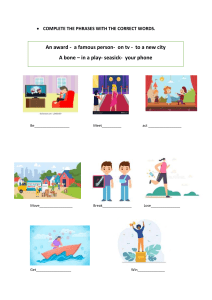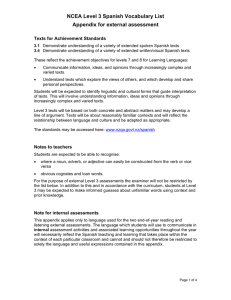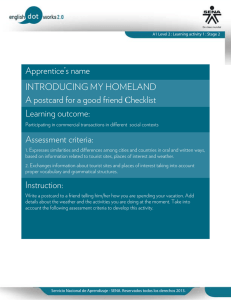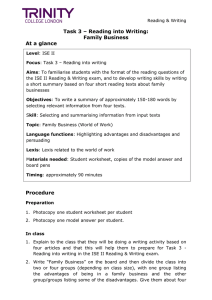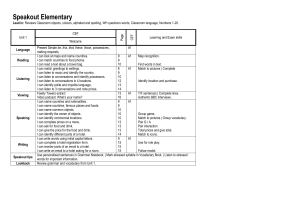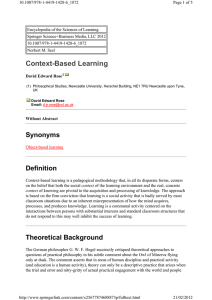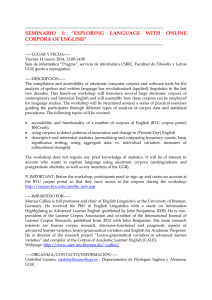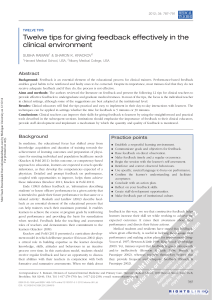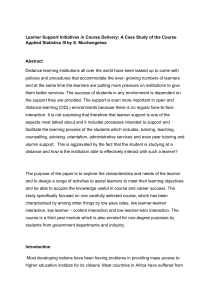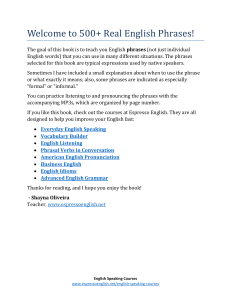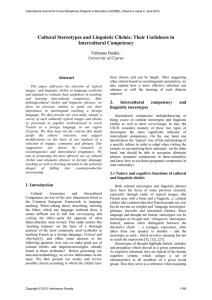Situations and Functions - Materials and Classroom Activities
Anuncio
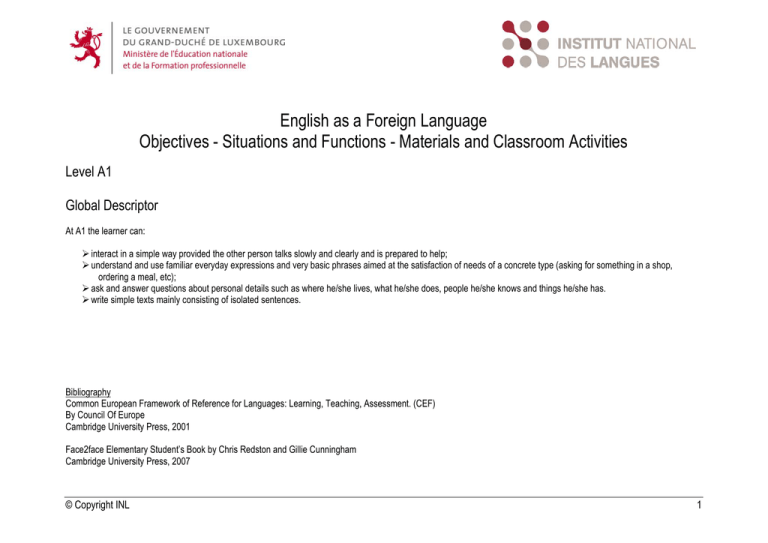
English as a Foreign Language Objectives - Situations and Functions - Materials and Classroom Activities Level A1 Global Descriptor At A1 the learner can: ¾ interact in a simple way provided the other person talks slowly and clearly and is prepared to help; ¾ understand and use familiar everyday expressions and very basic phrases aimed at the satisfaction of needs of a concrete type (asking for something in a shop, ordering a meal, etc); ¾ ask and answer questions about personal details such as where he/she lives, what he/she does, people he/she knows and things he/she has. ¾ write simple texts mainly consisting of isolated sentences. Bibliography Common European Framework of Reference for Languages: Learning, Teaching, Assessment. (CEF) By Council Of Europe Cambridge University Press, 2001 Face2face Elementary Student’s Book by Chris Redston and Gillie Cunningham Cambridge University Press, 2007 © Copyright INL 1 SPOKEN INTERACTION AND ORAL COMPREHENSION At A1 the learner can interact in a simple way but communication is totally dependent on repetition at a slower rate of speech, rephrasing and repair. They can ask simple questions, initiate and respond to simple statements in areas of immediate need or on very familiar topics. (CEF) Objectives Situations and Functions Materials and Classroom Activities (not extensive) ¾ Can make an introduction, use basic greeting and leave-taking expressions and ask people how they are and react to news. ¾ Greet people and respond to greetings and take leave. ¾ Introduce him / herself and other people. ¾ Ask people how they are and respond in a simple way. ¾ Mill drill on first day of classes ¾ Can describe him/herself, what he/she does and where he/she lives. ¾ Ask for and give personal details (name, address, job, etc) ¾ Complete a registration form with a partner. ¾ Make a class “Trombinoscope”. ¾ Can ask and answer questions about themselves and other people, where they live, people they know and things they have. ¾ Can ask people for things and give people things and handle numbers, quantities and time. © Copyright INL ¾ Ask and answer questions about his/her average day. ¾ Talk about and ask questions about family and friends. ¾ Talk about where he/she lives and ask questions to others. (E.g. Local environment and home) ¾ Talk about things that he/she has.(“Has/Have got”) ¾ Talk about things and activities he/she likes and likes doing. ¾ Ask for and tell the time. ¾ Ask for things in a shop, café or restaurant. ¾ Understand prices. Anglais langue étrangère A1_V1.2 ¾ Students prepare questionnaire and do survey. (What time do you…?) Class or group presentation of findings. ¾ Using photos or pictures of friends and family SS ask and answer questions about them. ¾ Pair work Interviews ¾ Whole class surveys ¾ Information-gap activities. ¾ Role plays using menus or pictures. 2 READING At A1 the learner can understand very short, simple texts a single phrase at a time, picking up familiar names. Words and basic phrases and rereading as required. Objectives Situations and Functions Materials and Classroom Activities (not extensive) ¾ Can recognise familiar names, words and very basic phrases on simple notices in the most common, everyday situations. ¾ Read a menu and choose something they would like to eat and drink. ¾ Find out the times of trains or buses. ¾ Fill in a hotel registration form. ¾ Find opening times and other basic information in adverts for museums, theatres, zoos, etc. ¾ Realia (menus, brochures, advertisements,etc). ¾ Roleplays: restaurant, buying a train ticket. ¾ Filling in a hotel registration form. ¾ Can get an idea of the content of simple informational material and short, simple descriptions especially if there is visual support. ¾ Read and understand simple elementary coursebook texts about familiar topics such as family, daily routines, free time activities, etc. ¾ Course book texts or texts that classmates have written. ¾ True/False information checks. ¾ Find some specific information in promotional material. ¾ Can understand the basic message in a postcard. ¾ Read and understand some information in a postcard. E.g: the weather, good time or not? Activities person is doing (beach, sports, sightseeing, etc). ¾ Can follow short, simple written directions(e.g. go from X to Y) ¾ Read a short email giving simple directions and find location on a map. © Copyright INL Anglais langue étrangère A1_V1.2 ¾ Realia: brochures, tourist information, etc. ¾ Postcards. ¾ Example of email and map. 3 WRITING At A1 the learner can write simple isolated phrases and sentences, linking words or groups of words with very basic connectors such as “and” or “but”. They can ask for or pass on personal details in writing. Objectives ¾ Can write simple phrases and sentences about themselves and other people, where they live and what they do. Situations and Functions Materials and Classroom Activities (not extensive) ¾ Write a short description of him/herself and family or friends saying where they live and what they do. ¾ Write some sentences describing their daily routine. ¾ Can write numbers and dates, own name, nationality, address, age, date of birth or arrival in the country, etc. ¾ Write information about his/her personal details on a form. ¾ Filling in a form. ¾ Can write a short, simple postcard. ¾ Write some words saying where they are, describing the weather, if they are having a good time or not, some activities they are doing. ¾ Students write a postcard to each other. © Copyright INL Anglais langue étrangère A1_V1.2 4
